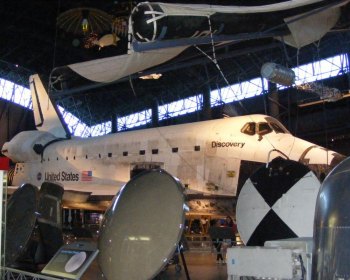Winged treasures explored on ground level

A skunk with history: Almost immediately, you’ll notice the Lockheed SR-71A, Blackbird, a sleek, long spy jet right out of the pages of 007. Now look at the tail. You’ll see a cartoon skunk, the logo of Lockheed Martin’s Skunk Works – a name associated with innovation dating back to World War II.
Skunk Works was born in 1943, when the U.S. Army’s Air Tactical Service Command wanted to quickly match jets under development by Germany, according to Lockheed's website. Engineers operated out of a circus tent beside a manufacturing plant that produced a strong odor, the website recounts. The smell brought to mind the name “Skunk Works” a place in the Li'l Abner comic strip where strong drink was brewed. (In the comic strip, it is referred to as Skonk Works.) One day, an engineer answered the phone, "Skunk Works," and the name stuck.
The Lockheed SR-71A was manufactured in 1967 and stayed in active service with the Air Force for 24 years, according to the Smithsonian’s guidebook, America’s Hanger.
R2D2: The scene-stealing robot from the movie Star Wars has found a home in the museum, but you must look sharp to find him. R2D2 can be seen on the impressive Mothership Model alien spaceship used in the film Close Encounters of the Third Kind. The model is in a display case in the rockets and missiles exhibit.
A history-making aircraft named for the pilot’s mother: The Boeing B-29 Superfortress, also known as the Enola Gay, dropped an atomic bomb on Hiroshima, Japan on Aug. 6, 1945. Immediately after releasing the bomb, the pilot, Paul W. Tibbets Jr. of the Army Air Force, executed a diving turn to avoid the blast, according to The New York Times. A second bomb was dropped on Nagasaki three days later by the Bockscar. But the name Bockscar didn’t work its way into popular culture as did Enola Gay. Tibbets, a brigadier general, had named the aircraft in honor of his mother. He died at 92 in 2007.
A well-appointed trailer: OK, so technically, this is a trailer even if the NASA guys didn’t call it that. NASA says it is a Mobile Quarantine Facility, although to the rest of us, it looks like a converted Airstream trailer. Comfortable-looking chairs can be seen through the window. The facility had sleeping quarters, a kitchen and a bathroom. But the trailer was not just a place for astronauts to hang out after the big lunar mission. It was also used to prevent “the unlikely spread of lunar contagions,” according to the Smithsonian. (See a photo of the trailer here.) As soon as scientists were convinced that the astronauts did not bring “moon germs” home with them, they were allowed to leave. The trailer was sent to the Smithsonian in 1974.
Related:
Photo Gallery: Air treasure at Smithsonian annex
Photo Gallery: The National Museum of American History turns 50
25 things to see as the Smithsonian's National Museum of American History turns 50

